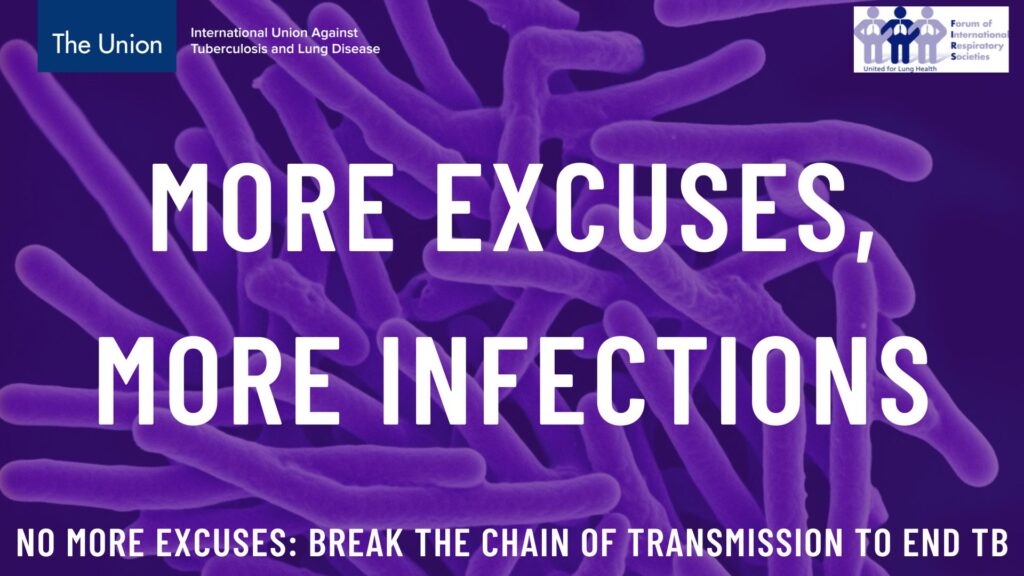
EventsWorld Days
World TB Day, 24 March
No More Excuses: Break the Chain of Transmission to End Tuberculosis – World TB Day 2025
Respiratory societies urge prioritisation of TB detection and treatment in high-burden areas.
On World TB Day 2025, the Forum of International Respiratory Societies (FIRS), co-founded by the APSR, urges all stakeholders—governments, agencies, NGOs, academics, civil society and donors— to focus on evidence-based policies and programmes that will break the chain of transmission to end TB in high-burden settings.
Dr Cassandra Kelly-Cirino, Executive Director of the International Union Against Tuberculosis and Lung Disease (The Union), a FIRS member, states: “We must be brave and recognise that our current approach is not going to achieve our goals – ending TB by 2030 or 2035.
“It is total injustice and failure by us all that millions of people around the world are still at high risk of TB. There are simply no more excuses for this inequity and suffering from this ancient and preventable disease.”
According to the World Health Organization’s latest Global Tuberculosis Report:
- In 2023, an estimated 10.8 million people fell ill with TB and there were an estimated 1.25 million deaths worldwide
- Between 2020 and 2023, the TB incidence rate (new cases per 100 000 population per year) is estimated to have increased by 4.6%, reversing declines of about 2% per year between 2010 and 2020.
- Approximately 2.7 million people were undiagnosed with the disease or not officially reported to national authorities in 2023.
Dr Kelly-Cirino continues: “While many people in high-income countries believe TB is a disease of the past (because it generally is, in their countries), it is very much present and impacting lives, in most countries of the world. It is an ancient disease that thrives on the kind of instability we are currently seeing due to conflict, political uncertainty and climate change.
“TB is an airborne infectious disease that does not respect borders. We all must play our part in eradicating TB in high-burden settings. TB anywhere is TB everywhere.”
The current difficult funding and geopolitical landscape requires the prioritisation of interventions that will have the most impact on reducing TB incidence rates (i.e. the rate of new TB infections). These interventions already exist – community-wide active case finding linked to effective treatment of people who have TB.
Prof Guy Marks, President of FIRS and The Union, explains: “In high-burden settings we must prioritise finding and treating everyone with TB. This is the only way to stop more people from being exposed, becoming infected, and infecting others. This is how we to break the chain of transmission and end TB once and for all.
“The effectiveness of this approach to end TB was proven during the latter half of the 20th century in several countries in Europe, North America, east Asia and Oceania, as well as Cuba.”
There is no ignoring the devastating impact the US Government’s decision to cut funding is having on global health and the most vulnerable people in our communities.
Dr Kelly-Cirino concludes: “Now is not the time to cut funding and engagement in the fight against TB – we can do that once the job is done. We urge communities to pressurise their leaders to end TB. In 2025, no one should expect to be at high risk of being infected with TB.
“We call on world leaders and donors to fulfil their commitment to end TB, by significantly investing in breaking the chain of transmission to ensure all their citizens are safe from being infected in the future.”

About the Forum of International Respiratory Societies (FIRS)
